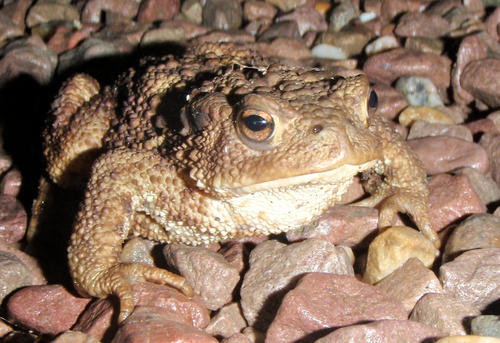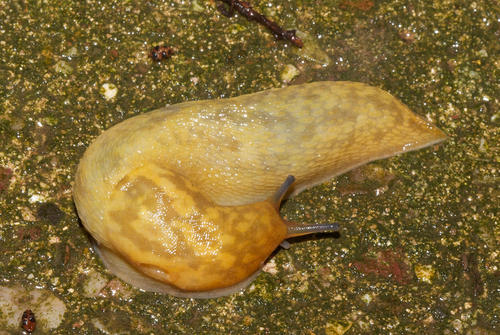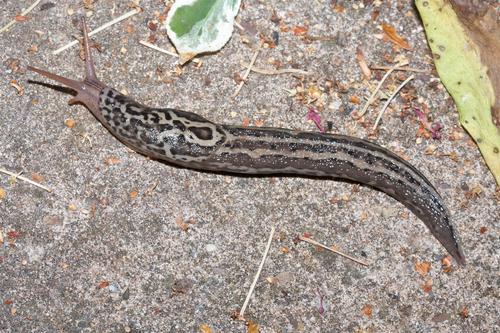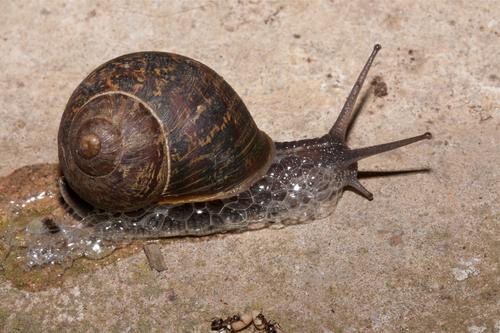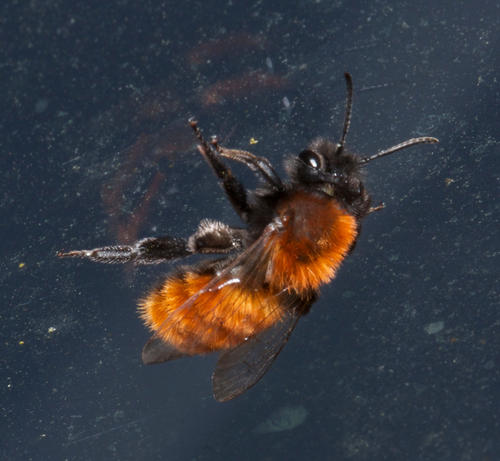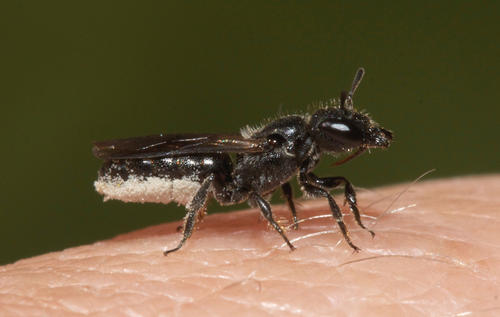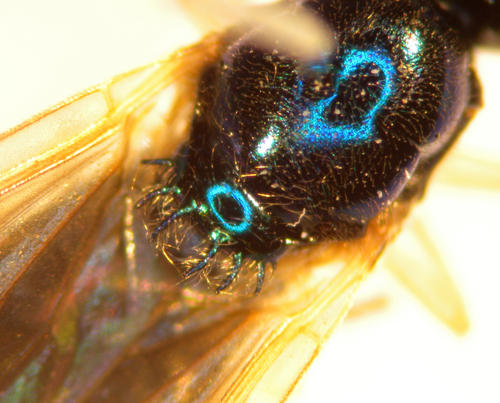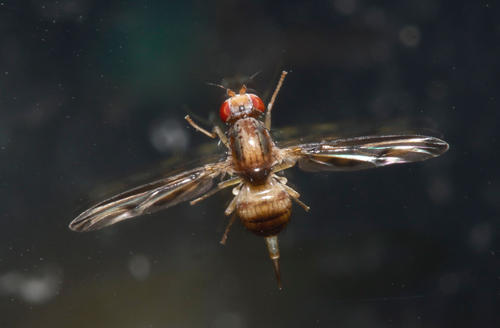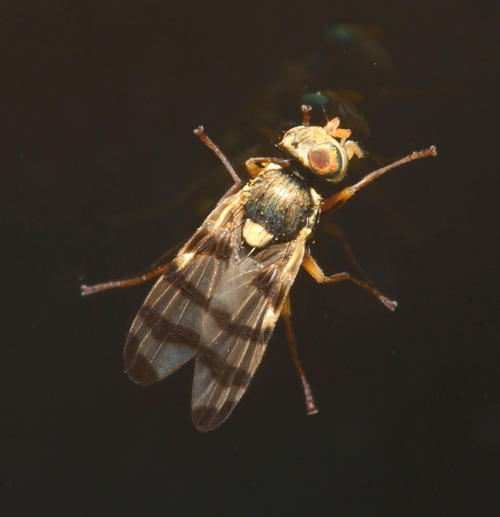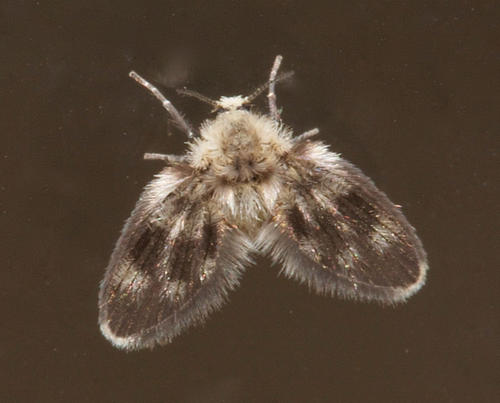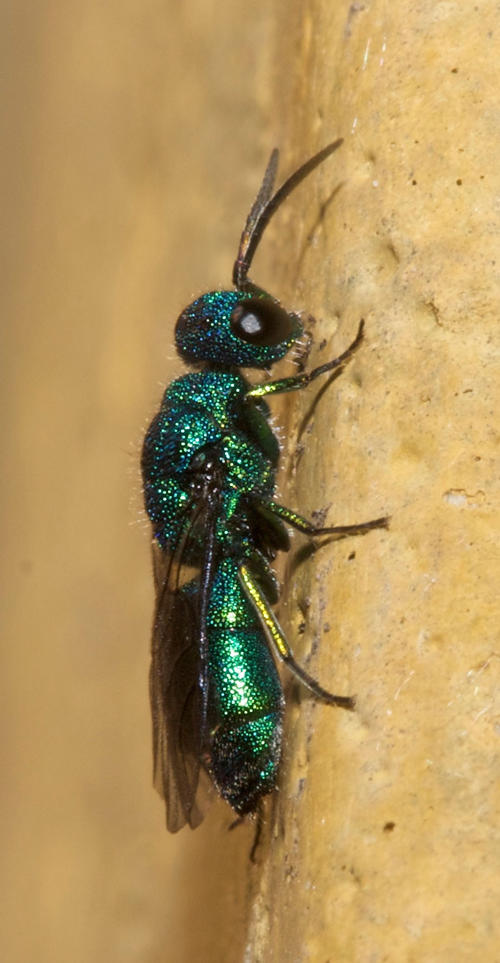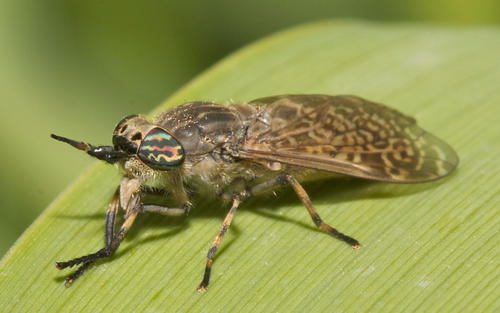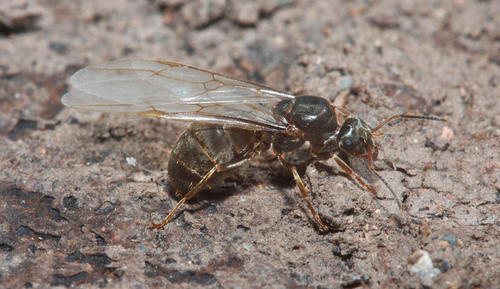Greenhouse safari! Invertebrates visiting greenhouses
Rosemary Winnall
We amateur entomologists are well used to sidling up to the windowsills in the houses of friends and acquaintances to take a furtive look for stranded insects. We often make wistful glances up to those covered light fitments through which small dark shadows speak of riches beyond our reach.
This summer, however, I have taken a particular interest in greenhouses and take delight in visiting the conservatories and greenhouses of friends and relations in order to get a sneaky look at the residents or visiting fauna! Indeed, our own greenhouse has provided a wealth of interest this summer by both day and by night. Perhaps creatures were coming in to shelter from the rain!
Residents included a large toad (Fig. 1.) that spent summer days beneath the flowerpots, beautifully marked Yellow Slugs Limacus flavus (Fig. 2.) and a large Leopard Slug Limax maximus (Fig. 3.) that used to venture out to feed on algae at night. I went down at 10.00pm one night and found a line of Lasius niger ants moving their pupae from under a slab in the garden to a new nest inside the greenhouse! Perhaps they were moving into warmer quarters for the winter because they couldn’t stand their waterlogged nest any longer! As I watched, a large snail Cornu aspersum slowly made its way across the line of ants. I am not sure what the ants did, but the snail soon started to produce a lot of protective frothy bubbles (Fig. 4.) as it made its way into the greenhouse to feast on our plants!
There were all kinds of small creatures up on the glass windows on sunny days. Andrena fulva (Fig. 5.)was a conspicuous visitor early in the year, Odynerus spinipes in June, and the smaller Campanula bee Chelostoma campanularum (Fig. 6.) in late summer. I had good views of some of the smaller flies against the glass, many of which are easily overlooked amongst foliage in the garden. I spotted the small hoverfly Neoascia podagrica, soldier flies Beris morrisii (Fig. 7.) with its distinctive spined scutellum, and the splendidly coloured female Sargus bipunctatus. Picture-winged Flies were easily spotted with their distinctive wing patterning: Palloptera muliebris (Fig. 8.), Urophora jaceana (Fig. 9.) Tephritis formosa amongst others.
Moth flies (Fig. 10.) were of particular interest but only the males can be identified, and most of the ones I spotted were females! There were tiny Chalcid wasps and the occasional Ruby-tailed Wasp, (Fig. 11.) and I could get close up views of the horse fly Haematopota pluvialis (Fig. 12.) to see the beautiful colours its eyes.
These flying insects attracted predators and there were several different spiders in residence and the distinctive harvestman Dicranopalpus ramosus on the wall. When flying ants ventured in many casualties were found in spiders’ webs and this enabled me to check out the winged queens and males of different ant species, for example Formica fusca (Fig. 13.).
Our greenhouse provided a warm dry environment for many creatures this year, and it was a great place to entomologise out of the rain! I can recommend it!
Images
Fig. 01. Common Toad. Rosemary Winnall
Fig. 02. Yellow Slug (Limacus flavus). Rosemary Winnall
Fig. 03. Leopard Slug (Limax maximus). Rosemary Winnall
Fig. 04. Garden Snail (Cornu aspersum) with Lasius niger ants carrying pupae. Rosemary Winnall
Fig. 05. Female Andrena fulva. Rosemary Winnall
Fig, 06. Campanula Bee Chelostoma campanularum. Rosemary Winnall
Fig. 07. Scutellum of soldier fly Beris morrisii.Rosemary Winnall
Fig. 08 Female Palloptera muliebris. Rosemary Winnall
Fig. 09. Male Urophora jaceana. Rosemary Winnall
Fig. 10. Female Moth Fly. Rosemary Winnall
Fig. 11. Ruby-tailed Wasp Trichrysis cyanea. Rosemary Winnall
Fig. 12. Horsefly Haematopota pluvialis. Rosemary Winnall
Fig.13. Queen ant Formica fusca. Rosemary Winnall
